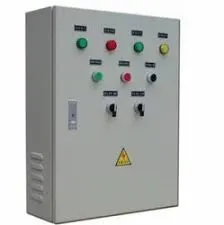The Importance of Cloth Wiring Harness Tape in Modern Electrical Applications
In the ever-evolving world of technology and electrical engineering, the materials and methods used in wiring systems have a profound impact on the efficiency, safety, and durability of electronic devices. Among the myriad of components that contribute to the integrity of wiring systems, cloth wiring harness tape stands out as a crucial element that enhances performance while offering various advantages over conventional materials.
What is Cloth Wiring Harness Tape?
Cloth wiring harness tape is a specialized adhesive tape made from woven fabric materials that are designed to insulate and bundle wiring harnesses. This type of tape has gained popularity in various applications, including automotive, aerospace, telecommunications, and consumer electronics, due to its unique properties and versatility.
Key Benefits of Cloth Wiring Harness Tape
1. Electrical Insulation One of the primary functions of cloth wiring harness tape is to provide excellent electrical insulation for exposed wires. The fabric material acts as a barrier, preventing accidental shorts and ensuring that electrical signals remain confined to their designated paths. This is particularly critical in high-voltage environments where the risk of electrical arcs and failures can lead to catastrophic outcomes.
2. Durability and Protection Cloth tape is designed to withstand challenging conditions, including temperature extremes, moisture, and various chemicals. Its robust nature ensures that wiring harnesses remain protected from physical wear and tear, which can occur due to vibration, abrasion, or environmental exposure. This durability translates to enhanced longevity and reduces maintenance costs associated with replacing damaged wires.
cloth wiring harness tape

3. Flexibility and Conformability Unlike rigid materials such as plastic or PVC, cloth wiring harness tape is highly flexible and conformable. This characteristic allows the tape to wrap around complex shapes and contours of wiring harnesses, ensuring a snug fit that minimizes movement and potential damage. This flexibility also makes it easier to apply in tight spaces, where maneuverability is essential.
4. Lightweight Design In industries such as aerospace and automotive, every ounce of weight counts. Cloth wiring harness tape offers a lightweight alternative to heavier insulation materials, contributing to weight reduction in electrical systems without compromising performance. This is particularly beneficial in applications where weight savings can lead to improved fuel efficiency and operational performance.
5. Noise Reduction The fabric construction of cloth tape can also help dampen mechanical vibrations and reduce noise levels within electrical systems. This is particularly important in automotive applications where engine noise and vibrations can interfere with passenger comfort and overall driving experience.
Applications of Cloth Wiring Harness Tape
The versatility of cloth wiring harness tape has made it a go-to choice across numerous industries. In automotive engineering, it is used extensively to bundle wiring for ignition systems, lighting, and power distribution while ensuring that wires remain insulated and protected from heat and moisture. In aerospace, the tape is utilized to secure and insulate wiring harnesses in aircraft, where safety and performance are paramount. Moreover, consumer electronics manufacturers rely on cloth tape for the assembly of devices such as smartphones, laptops, and home appliances.
Conclusion
As technological advancements continue to push the boundaries of electrical engineering, materials like cloth wiring harness tape will play an increasingly important role. Its unique blend of insulation properties, durability, flexibility, and lightweight design ensures that it meets the demanding requirements of modern applications. As we look toward the future, it is clear that cloth wiring harness tape will remain a vital component in enhancing the reliability and performance of electrical systems across a wide range of industries. Whether you are an engineer, a manufacturer, or a DIY enthusiast, understanding the benefits of this tape can lead to better design choices and improved project outcomes.
-
XIANGFAN Rubber Tape-Ultimate Solutions for All Your Insulation NeedsNewsJun.24,2025
-
XIANGFAN Rubber Tape-Protection for Industrial and Residential ApplicationsNewsJun.24,2025
-
XIANGFAN Rubber Tape: Superior Safety and Sealing for Demanding EnvironmentsNewsJun.24,2025
-
XIANGFAN Rubber Tape: Reliable Solutions for Every Electrical ChallengeNewsJun.24,2025
-
XIANGFAN Electrical & Industrial Tape: Powering Reliability Across IndustriesNewsJun.24,2025
-
XIANGFAN Electrical & Industrial Tape: Excellence in Every ApplicationNewsJun.24,2025
